University of Peradeniya
The University of Peradeniya (Sinhala: පේරාදෙණිය විශ්ව විද්යාලය, Tamil: பேராதனைப் பல்கலைக்கழகம்) is a state university in Sri Lanka, funded by the University Grants Commission.[2] It is the largest university in Sri Lanka, which was originally established as the University of Ceylon in 1942. The University was officially opened on 20 April 1954 in the presence of H. M. Queen Elizabeth II by H. R. H. Prince Philip, Duke of Edinburgh.
පේරාදෙණිය විශ්ව විද්යාලය பேராதனைப் பல்கலைக்கழகம் | |
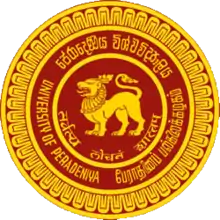 University of Peradeniya Crest | |
| Motto | Sarvasva Locanam Sasthram (Sanskrit) |
|---|---|
Motto in English | Knowledge is the Eye Unto All |
| Type | Public |
| Established | 1942 University of Ceylon 1972 University of Sri Lanka, Peradeniya Campus 1978 University of Peradeniya |
| Endowment | LKR 2.265 billion[1] |
| Chancellor | P.W. Epasinghe |
| Vice-Chancellor | Upul B.Dissanayake |
Academic staff | 731 |
Administrative staff | 2,973 |
| Students | 11,065 [a] |
| Undergraduates | 9,605 [b] |
| Postgraduates | 1,440 [c] |
| Location | , |
| Campus | Suburban 700 Hectares |
| Publication(s) | Ceylon Journal of Science Sri Lanka Journal of Humanities and Social Sciences |
| Colours | |
| Athletics | 30 athletic teams |
| Affiliations | University Grants Commission of Sri Lanka Association of Commonwealth Universities |
| Website | www |
 | |
The University of Peradeniya hosts nine faculties (including the newly added Management faculty), three postgraduate institutes, 10 centres, 73 departments, and teaches about 12,000 students in the fields of Medicine, Agriculture, Arts, Science, Engineering, Dental Sciences, Veterinary Medicine and Animal Science, Management and Allied Health Science.[3] It claims to have the largest government endowment by a higher education institution in Sri Lanka, based on its large staff and faculties/departments.[1]
Ranking
In 2020 Times Higher Education World University Rankings has placed the University of Peradeniya 1st in Sri Lanka and 401-500 band in world university ranking. This is the highest world ranking that any university in Sri Lanka has reached in the recent history. The University of Peradeniya has also been ranked 1st in Sri Lanka under other popular university rankings schemes such as webometric, QS and QS regional rankings in 2019–2020. In 2019–2020, according to University Ranking by Academic Performance (URAP), University of Peradeniya ranked 1st in Sri Lanka and 1123rd in the world. University of Peradeniya was ranked No. 1 in Sri Lanka based on total ResearchGate scores.
Location
On a site that touches the lower slopes of the lush Hanthana mountain range, University of Peradeniya is known for its natural environment. It has inspired intellectuals like Prof. Ediriweera Sarachchandra, Sri Lanka's premium playwright.[4] The university is in the Central Province, 8 km from the sacred city of Kandy (the historic capital of the last kingdom of Sri Lanka) and about 110 km from Colombo. A tourist attraction, Botanical Garden of Peradeniya is close by.
The university spans nearly 700 hectares in the Mahaweli flood plain. Most of the area remains afforested. The climate around the university is mild, and the temperature fluctuates between 18 and 30 degrees Celsius.
The main entrance to the university is through Galaha road. The Faculty of Engineering is on one side of the Mahaweli River and all other faculties are on the other side. The Akbar bridge links the two banks of the river. Considered as a marvel of civil engineering, it was designed by late Prof. A. Thurairajah (Dean of the Faculty of Engineering, 1975–77 and 1982–85) and built by the first batch of the faculty, in the year of its inception.
The Sarasavi Uyana railway station is on campus. Another bridge known as Yaka Paalama links the railway to the other bank. Daily shuttle bus services operate from Kandy to Galaha junction and Kandy to the university.
A separate subcampus was established in 1968 at Mahailuppallama, North Central province for the Faculty of Agriculture.[5] Separate residential facilities are provided to this subcampus.
History
Beginnings
The proposal for the establishment of University of Ceylon, the first university of Sri Lanka (the predecessor of University of Peradeniya) goes back to 1899.[3] But no progress was seen until the formation of Ceylon University Association in 1906 under the guidance of Sir Ponnambalam Arunachalam, Sir James Peiris and Sir Marcus Fernando. Its request for a European-style university in Sri Lanka was partially granted by the British rulers with the formation of Ceylon University College on 1 January 1921.
The University Council, through which the administration of the Ceylon University College was done, appointed committees to plan the academic activities of a future university.[3] It made suggestions to build the university in Bullers Road (now Bauddhaloka Mawatha) in Colombo, but it was disputed by politicians. To resolve the conflict, the then Governor Hugh Clifford appointed a committee headed by Justice M.T. Akbar on 20 December 1926. It suggested that the proposed university should be unitary, residential and outside Colombo. Another committee was appointed in 1928 with Sir Walter Buchanan-Riddel as chairman. It proposed a site at Aruppola, in the Dumbara Valley close to Kandy. Dr. S.C. Paul and Andreas Nell pointed out disadvantages in the site and proposed a larger one at Peradeniya.
In 1938 the government acquired the plot and developed an area about 150 hectares (out of 700 hectares) to create the University Park.[6]
Although the site was acquired, no plans were made to establish the university until 1941. With the arrival of Sir Ivor Jennings, as the second principal of the Ceylon University College, establishment plans were put into effect. He stressed the urgent need to move the university to Peradeniya to the Minister of Education C. W. W. Kannangara and took the initiative in the process. Thus he is considered the forefather of the University of Peradeniya.[7]
1942 to 1952
In 1942, the University of Ceylon was created as the first unitary, residential and autonomous university in Sri Lanka with its seat in Peradeniya, amalgamating Ceylon University College and the Medical College into a single unit with 55 academic staff members, 904 students in four faculties.[8][9] But due to World War II, the construction of buildings started in 1946. Until then, the lectures and laboratory classes were conducted in the buildings obtained from the Ceylon University College and the Ceylon Medical College in Colombo.
Consultants Sir Patrick Abercrombie and Clifford Holliday did the planning and layout of the university complex. The first phase of work constituted only the development of the left bank. The building of a bridge across the Mahaweli River, later known as the 'Akbar bridge', was planned by Prof. A Thurairajah. Transfer of the first batch of students, students from the Departments of Law and Agriculture and the third and fourth year students of the Department of Veterinary Science, from Colombo to Peradeniya took place in 1949. Another major move took place in 1952, with the transfer of staff and students of the Faculties of Arts and Oriental Studies, together with the Main Library and the University Administration. This movement on 6 October 1952 marks the official establishment of University of Ceylon, Peradeniya. At the initial stages, vice chancellor Jennings wanted to model British universities, but met with the resistance of students who opposed the changes.[10]
1952 to 1972

Although the buildings at Peradeniya were established in 1952, the official ceremony for its inception was held on 20 April 1954, with the participation of Queen Elizabeth II. The Sri Lankan government was keen to postpone the ceremony until Queen Elizabeth II could participate. Her visit was delayed by the death of King George VI. Prince Philip, Duke of Edinburgh also participated in the event. He declared the university opened:
You have remarked Mr. Chancellor, that it is not easy to open a university, because once established it is always open. However, like the shopkeepers of London during the bombing, I can declare this place to be "more open than usual..."
Sections of the University of Ceylon, functioned in Colombo and Peradeniya acted as campuses of the same university until 1967. In 1967, these campuses were split into two. The section in Peradeniya was known as the University of Ceylon, Peradeniya, while the section in Colombo was known as University of Ceylon, Colombo.
1972 to 1978
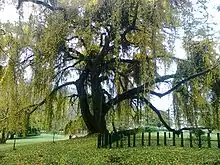
By the University Act No. 1 of 1972, four universities functioned a — Peradeniya, Colombo, Vidyodaya and Vidyalankara and the Ceylon College of Technology, Katubedda, Moratuwa became five constituent campuses of a single structure – the University of Sri Lanka. It had one vice chancellor and five presidents for five campuses. Under this designation, University of Ceylon – Peradeniya became the University of Sri Lanka – Peradeniya Campus. This designation prevailed until 1978.
1978 to the present
Under the Universities Act No. 16, 1978, the University of Sri Lanka was split into six independent, autonomous institutions as University of Peradeniya, University of Colombo, University of Sri Jayewardenepura, University of Kelaniya, University of Moratuwa and University of Jaffna.[11] This Act brought back some of the central features of the Ceylon University Ordinance of 1942 such as the senates, the councils and courts.
Governance and administration
The University of Peradeniya operates under the provisions of the Universities Act No. 16 of 1978 and the Universities (Amendment) Act No. 7 of 1985. It is a state university and the undergraduate study is 100% free. Therefore, it depends on the government for much of its annual grant, which is provided by the University Grants Commission (UGC). Due to this, its administration is heavily influenced by the UGC. The administration is based upon that of the former University of Ceylon consisting of a dual structure of bodies: the council (formally known as the University Court which is the governing body) and the Academic Senate (academic affairs).
Officers

The chancellor is the head of the university and is responsible for awarding all the academic degrees. Usually the chancellor is a distinguished person in an academic discipline. Otherwise it is a clergy or a distinguished person in the civil society. Appointment is done by the President of Sri Lanka. The position is mainly ceremonial and duties are usually carried out by the vice chancellor. The current chancellor of the university is Prof. P.W. Epasinghe. He is the IT advisor to the president of Sri Lanka
The vice chancellor is de facto the principal academic and administrative officer of the university, responsible for management tasks. This appointment is also done by the President of Sri Lanka. The current vice chancellor is Prof. Upul B.Dissanayake, who is also the Professor of Oral Pathology and former head of the Department of Oral Pathology.
The deputy vice-chancellor is Prof. Shantha Hennayake, former head of the Department of Geography.
Deans are the heads of the faculties. They are responsible for the management and the tasks carried out by the faculty. Deans are appointed by the chancellor for three years.
List of chancellors and vice chancellors
|
|
Faculties and institutions
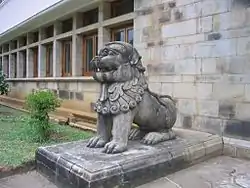
| Founding of the Faculties of the University of Peradeniya | ||
|---|---|---|
| Faculty | Year founded | |
| Faculty of Arts | 1942 | |
| Faculty of Medicine | 1962 | |
| Faculty of Science | 1961 | |
| Faculty of Dental Sciences | 1943 | |
| Faculty of Agriculture | 1947 | |
| Faculty of Veterinary Medicine and Animal Science | 1947 | |
| Faculty of Engineering | 1950 | |
| Faculty of Allied Health Sciences | 2005 | |
| Faculty of Management | 2015 | |
The university has eight academic faculties of study. These faculties contain 72 departments. In addition, the university has two postgraduate institutions and six affiliated centres. At the beginning, it had only three present-day faculties — the Faculty of Arts, the Faculty of Medicine and the Faculty of Science. Departments of Law and Oriental Studies functioned separately. Since then, five other faculties have been added. The latest addition is the Faculty of Allied Health Science, established in 2005.
The Post-graduate Institute of Science (PGIS) and Post-graduate Institute of Agriculture (PGIA) are the institutions established in the university. PGIS is a national institute established by the Ministry of Higher Education, Sri Lanka in 1996. PGIA was established in 1975 and offers three postgraduate degrees. PGIA offers postgraduate level courses in Agricultural disciplines. In addition to these institutions, Senerath Paranavitana Teaching and Research Museum functions affiliated to the Department of Archaeology, Faculty of Arts.[12] It was established in 1960.
Library network
The library is a centrally administered network of libraries. It is considered the oldest academic library in Sri Lanka.[d] Containing over 430,000 items, it is one of the largest libraries serving the country. Seven branches are in faculties in the main campus at Peradeniya and one other branch in Mahailuppallama subcampus.
University of Peradeniya library contains a legal deposit collection of 300,000 items, special collection of 15,000+ items acquired from various individuals, palm-leaf manuscript collection of approximately 5,000 (second largest in Sri Lanka) and a microfilm collection of 17,000. Furthermore, it owns the largest historical map collection in Sri Lanka.[13]
Student life
Student Organizations
Students at the University of Peradeniya run over 100 clubs and organizations. These include cultural and religious groups, academic clubs, and common-interest organizations. The Peradeniya Students' Union (PSU) is considered the highest body which represents all internal students.[14] Separate student unions operate in each faculty. These student societies include:
|
|
Sports

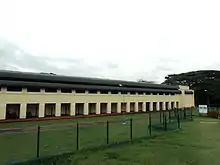
Sports activities are conducted by the Department of Physical Education. University of Peradeniya has 30 athletics teams to date. Facilities include a well-equipped gymnasium, one of the largest multi-purpose outstation stadiums in Sri Lanka, a 50m swimming pool and separate stadiums for cricket, rugby, football, hockey, tennis, track and field, and elle.
Residential facilities
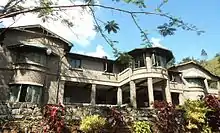
The University of Peradeniya is the only residential university in Sri Lanka. It provides residential facilities to most of its undergraduate students, all its academic staff members and guests. Three guest houses — Gal Bangalawa, Upper Hantana Guest House and Lady Hill was a tourist hotel – come under university administration. Residential halls for undergraduate students:
|
|
International collaborations
The university has developed international relationships since its earliest days. Student exchange programs (Erasmus and International Credit Mobility Programme with SLU, Sweden), collaborative research, split postgraduate programs, international seminars, conferences and short courses are being carried out with these global partners by the Directorate of Research and International Affairs. This was established as a separate institution in 2006.[15] UoP has initiated cooperation programs with foreign governments and institutions.
Academic networking
UoP is a member of the Association of Commonwealth Universities (ACU) academic network.
Research and academic partners
The university has signed Memorandums of Understanding for research and academic development with these international universities.[16]
 University of California, Davis Campus, United States
University of California, Davis Campus, United States National University of Singapore, Singapore
National University of Singapore, Singapore University of Pennsylvania, United States (with Solomon ASCH Centre for the Study of Ethnopolitical Conflict)
University of Pennsylvania, United States (with Solomon ASCH Centre for the Study of Ethnopolitical Conflict).svg.png.webp) University of Ottawa, Canada (Governance and Institutional Strengthening Project)
University of Ottawa, Canada (Governance and Institutional Strengthening Project) Carnegie Mellon University, United States
Carnegie Mellon University, United States University of Aberdeen, United Kingdom (with School of Biological Sciences)
University of Aberdeen, United Kingdom (with School of Biological Sciences) University of Göttingen, Germany (with Institut für Sportwissenschaften)
University of Göttingen, Germany (with Institut für Sportwissenschaften).svg.png.webp) University of Guelph, Canada (cooperation in Food and Science Technology)[17]
University of Guelph, Canada (cooperation in Food and Science Technology)[17] University of Naples Federico II, Italy
University of Naples Federico II, Italy University of North Dakota, United States[18]
University of North Dakota, United States[18] Marche Polytechnic University, Italy
Marche Polytechnic University, Italy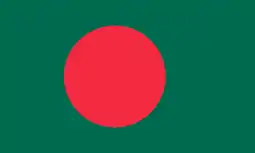 North South University, Bangladesh (Public Policy and Governance)[19]
North South University, Bangladesh (Public Policy and Governance)[19] Institute of Polytechnic de Grenoble, France (Educational and Scientific cooperation)
Institute of Polytechnic de Grenoble, France (Educational and Scientific cooperation) Yamagata University, Japan
Yamagata University, Japan Institute National Polytechnique de Lorraine, France (Higher Education on Disaster Mitigation)
Institute National Polytechnique de Lorraine, France (Higher Education on Disaster Mitigation) Hokkaido University, Japan (With Graduate School of Veterinary Medicine)
Hokkaido University, Japan (With Graduate School of Veterinary Medicine) University for Foreigners Perugia, Italy
University for Foreigners Perugia, Italy Osaka Prefecture University, Japan (cooperation in Veterinary Medicine and Animal Science)
Osaka Prefecture University, Japan (cooperation in Veterinary Medicine and Animal Science) Rajamangala University of Technology, Thailand
Rajamangala University of Technology, Thailand Saga University, Japan (Telemedicine)[20]
Saga University, Japan (Telemedicine)[20]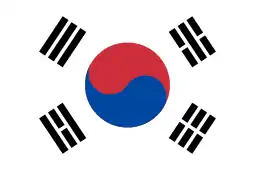 Dongguk University, South Korea (Pali and Buddhist Studies)
Dongguk University, South Korea (Pali and Buddhist Studies) Niigata University, Japan
Niigata University, Japan University of Limerick, Ireland
University of Limerick, Ireland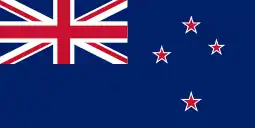 Lincoln University, New Zealand
Lincoln University, New Zealand United Nations University, Japan
United Nations University, Japan Yonsei University, South Korea (academic exchange and cooperation)
Yonsei University, South Korea (academic exchange and cooperation) Asian Institute of Technology (AIT), Thailand (Asian Regional Research Programme on Environmental Technology Phase II)
Asian Institute of Technology (AIT), Thailand (Asian Regional Research Programme on Environmental Technology Phase II)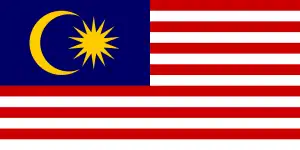 Universiti Sains, Malaysia
Universiti Sains, Malaysia Lund University, Sweden
Lund University, Sweden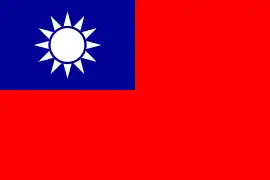 National Formosa University, Taiwan
National Formosa University, Taiwan
Intercollegiate Sri Lanka Education program
The Intercollegiate Sri Lanka Education (ISLE) program provides facilities for undergraduate students from United States of America to study in Sri Lanka. Each year, about 20 undergraduates spend five months in Sri Lanka following courses given by members of the Faculty of Arts. This programme also involves an exchange of faculty.[21][22]
 Cornell University, Ithaca, NY, United States
Cornell University, Ithaca, NY, United States Bates College, Maine, United States
Bates College, Maine, United States Bowdoin College, Maine, United States
Bowdoin College, Maine, United States Carleton College, Minnesota, United States
Carleton College, Minnesota, United States Colby University, Maine, United States
Colby University, Maine, United States Grinnell College, Iowa, United States
Grinnell College, Iowa, United States College of the Holy Cross, Worcester, United States
College of the Holy Cross, Worcester, United States Macalester College, Minnesota, United States
Macalester College, Minnesota, United States Swarthmore College, Pennsylvania, United States
Swarthmore College, Pennsylvania, United States Whittier College, California, United States
Whittier College, California, United States
Government partnerships
 Government of Sweden – research cooperation on SAREC project
Government of Sweden – research cooperation on SAREC project Government of Japan – capacity building training programme for Oral & Maxillafacial surgeons
Government of Japan – capacity building training programme for Oral & Maxillafacial surgeons Government of Egypt – Arabic student exchange program and teaching Islamic civilization
Government of Egypt – Arabic student exchange program and teaching Islamic civilization Swedish International Development Cooperation Agency (SIDA)
Swedish International Development Cooperation Agency (SIDA) United Nations Development Programme (UNDP) – research cooperation
United Nations Development Programme (UNDP) – research cooperation
People
Students
| Total Students | Percentage | |
|---|---|---|
| Sinhalese | 7849 | 81.72% |
| Tamil | 1006 | 10.47% |
| Muslim | 661 | 6.88% |
| Burgher | 8 | 0.08% |
| Indian Tamil | 42 | 0.44% |
| Other/International | 39 | 0.41% |
| Total | 9605 | 100% |
Total number of undergraduates in the university for year 2009/10 was 9605. Student intake for that year remained 2620. In 2008, 1514 postgraduate students studied in the university, most of them affiliated to the two postgraduate institutions: Postgraduate Institute of Science (PGIS) and Postgraduate Institute of Agriculture (PGIA). Postgraduate output for the year was 358, including 15 doctorates. Faculties except Science and Agriculture conducted their own postgraduate courses.
Women constituted 53.15 percent of undergraduates. Women constitution remained over 45 percent in all faculties except Faculty of Engineering where it was 15.46 percent.[f] Courses in all faculties except Faculty of Arts are taught in English medium. In the Faculty of Arts 69.85 percent undergraduates are enrolled in Sinhala, 15.93 percent in Tamil and 14.22 percent in English.
Alumni
University of Peradeniya has produced a large number of alumni. Among the best-known are Sri Lankans are Hon. W. J. M. Lokubandara; former speaker of the parliament (2005–2010),[23] Sri Lankabhimanya Hon. Lakshman Kadirgamar; distinguished diplomat, politician and lawyer,[24][25] Dr. Jayantha Dhanapala; former Under-Secretary-General for Disarmament Affairs, United Nations,[26] Prof. Gananath Obeyesekere; emeritus Professor of Anthropology at Princeton University and the person who entered into an intellectual debate with Marshall Sahlins over the rationality of indigenous people through the details of Captain James Cook's death in the Hawaiian Islands in 1779,[27] Prof. Anuradha Seneviratna; a renowned Sri Lankan scholar,[28] Prof. Malik Peiris; discoverer of severe acute respiratory syndrome (SARS) virus,[29] Prof. Saman Warnakulasuriya ; OBE- Emeritus Professor King's College London, UK & Director WHO Collaborating Centre on Oral Cancer, Major General Janaka Perera; chief of staff of the Sri Lanka Army and one of the most distinguished generals in Sri Lankan history,[30] Prof. J B Disanayake; head of the Department of Sinhala, University of Colombo.,[31] Prof. Kusuma Karunaratne; the first female Professor of Sinhala language[32] Dr. Gunadasa Amarasekera; a prominent Sinhala writer, poet, and essayist[33] and Prof. Neelan Tiruchelvam – A Sri Lankan Tamil politician, peace activist and an internationally respected academic. Founder and director of the International Centre for Ethnic Studies and the founder and director of The Law and Society Trust.[34][35]
Faculty
| Comparison of Academic Staff[36][g] | ||
|---|---|---|
| Category | Number engaged in the university system (2008) | Number engaged in University of Peradeniya (2008) |
| Professors | 386 | 106 |
| Associate Professors | 79 | 23 |
| Senior Lecturers | 1929 | 336 |
| Lecturers | 1556 | 216 |
| Academic Support Staff | 326 | 50 |
The number of permanent academic staff of University of Peradeniya is 731. It is the university in Sri Lanka that is served by the highest number of professors, associate professors and academic staff. Teacher to student ratio of the university was 1:13 by 2008.
University of Peradeniya has been served by a number of world-class faculty. Distinguished faculty include Prof. Stanley Jeyaraja Tambiah; Professor in Anthropology (1955–1960), a leading social anthropologist in the world, recipient of the prestigious Balzan Prize,[37] the highest recognition of the Royal Anthropological Institute of Great Britain and Ireland and Esther and Sidney Rabb Professor (Emeritus) of Anthropology at Harvard University, Prof. Senarath Paranavithana; the pioneering archeologist and epigraphist of Sri Lanka and once the archeological commissioner,[38] Prof. Gunapala Malalasekera; famous Sri Lankan scholar and diplomat; compiler of the "Gunapala Sinhala-English Dictionary",[39] Prof. Anuradha Seneviratna; a renowned Sri Lankan scholar, Prof. Seneka Bibile, the founder of Sri Lanka's drug policy and the greatest medical benefactor of humanity that Sri Lanka has hitherto produced.[40] and Prof. Ashley Helpe, a prominent Sri Lankan writer.
Criticism
Ragging
The university has been criticized for its high level of ragging with several incidents grabbing national headlines.[41] These include the death of S. Varapragash in 1997 due to kidney failure following severe ragging by a group of senior students[42] and the permanent disability of Rupa Rathnaseeli in 1975 as a result of having jumped from the second floor of the hostel Ramanathan Hall to escape the physical ragging by the seniors. She died by suicide in 2002.[43] In 1997, Selvanayagam Varapragash, a first-year engineering student was murdered on the campus due to hazing. He was subjected to sadistic ragging, and in the post-mortem a large quantity of toothpaste was found in his rectum.
Popular culture
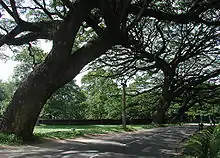
The University of Peradeniya holds a central position in classical university education, which has made it the setting for many dramas, films, songs, poems, novels and other cultural works in Sri Lanka.[44][45]
Songs like "Hanthanata paayana sanda..." by Amarasiri Peiris, "Hanthane kandu muduna sisara..." by W. D. Amaradeva, "Hanthana adaviye meduru kulunu sudu sandaluthalaa pisa..." by Nanda Malini, "Mé nagaraya maa oba munagasunu nagarayayi..." by Mervin Perera, "Hanthane raja dahane...", "Nethu saluna...", "Hantana Desin ena..." are only a few of them. Movies like Gamini Fonseka's Saagarayak Meda (In the middle of an ocean) and Sugathapala Senarath Yapa's Hanthane Kathawa (The story of Hanthana) are directly based on University of Peradeniya.
UoP is featured in novels: Siri Gunasinghe's Sevanella (The shadow) and Gunadasa Amarasekara's Ek Sathya Kathawak (One true story). Groundbreaking dramas like Prof. Ediriweera Sarachchandra's Maname (1957) and Sinhabahu (1960) were first directed and played there.[10][46] In Sarachchandra's novel Heta Echchara Kaluvara Nae (Tomorrow is not that dark), an entire chapter is dedicated to describe the beauty of the university.
Further reading
- De Silva, K. M. and Jayatilaka, Tissa (eds). Peradeniya: Memories of a University, International Centre for Ethnic Studies, Kandy (1997), ISBN 955-580-023-5
- Peiris, Ralph. Universities, politics and public opinion in Ceylon, Springer, Netherlands (Volume 2, Number 4 / June 1964). ISSN 0026-4695 (Print) ISSN 1573-1871 (Online). 435-454pp.
- Goonetileke H. A. I. Introduction to Jennings’s The Kandy Road (1993)
- Jennings, Sir Ivor The Road to Peradeniya (Autobiography), ISBN 955-552-114-X
- Gooneratne, Yasmine. The Sweet and Simple Kind: A Poetic Account of a Nation's Troubled Awakening, Abacus Publishers (2006), ISBN 1-4087-0163-4 / ISBN 978-1-4087-0163-8 (UK edition)
See also
| Wikimedia Commons has media related to University of Peradeniya. |
Notes
- a. ^ Table 2.1.1: Total student enrolment by faculty (pp.24), University Hand Book 2009 published by the University of Peradeniya publications (2010).[47]
- b. ^ Table 2.1.1: Total student enrolment by faculty (pp.24), University Hand Book 2009.
- c. ^ Table 2.1.1: Postgraduate students by faculty (pp.24), University Hand Book 2009.
- d. ^ "The oldest academic library in Sri Lanka, founded in 1921 as the university College Library became the University of Ceylon Library in 1942 and was moved to Peradeniya in 1952. Currently it has one of the largest collections in the country, numbering more than 500,000 in volume" – International dictionary of library histories, Volume 1.[48]
- e. ^ Table 2.1.15: Undergraduate enrolment by ethnicity (pp.39), University Hand Book 2008
- f. ^ Total number of students in Faculty of Engineering, 2008: 1468. Number female: 227. Table 2.1.4: Undergraduate enrolment by ethnicity (pp.22), University Hand Book 2008
- g. ^ Only permanent staff included. Number of academic staff engaged in university education is retrieved from the University Statistics – 2008 by University Grants Commission of Sri Lanka
References
- "University System at a Glance". University Grants Commission (Sri Lanka). 2009. Archived from the original on 18 April 2010. Retrieved 24 May 2010.
- "Overview of the University". University of Peradeniya. 2002. Archived from the original on 13 January 2010. Retrieved 24 May 2010.
- "Faculties, Postgraduate Institutes and Centres of the University of Peradeniya in the year 2002". University of Peradeniya. 2002. Archived from the original on 16 January 2011. Retrieved 24 May 2010.
- "Symposium: Sri Lanka's Culture Experience – Between Home and the World". Frontline. 1999. Archived from the original on 29 September 2007. Retrieved 3 January 2011.
- "Faculty of Agriculture sub campus". Faculty of Agriculture, University of Peradeniya. 2008. Archived from the original on 27 November 2010. Retrieved 24 May 2010.
- "Cambridge by the Mahaweli: Peradeniya University". The Island. 2009. Retrieved 24 May 2010.
- "First Vice-Chancellor of University of Ceylon". Rootsweb. Retrieved 24 May 2010.
- "University of Peradeniya, Sri Lanka: The Association of Commonwealth Universities". Association of Commonwealth Universities. 2009. Archived from the original on 16 July 2011. Retrieved 24 May 2010.
- "Historical Roots". University of Peradeniya library. 2009. Archived from the original on 18 August 2010. Retrieved 28 May 2010.
- "Kandy in 1940s and 50s..." Daily News. 2009. Archived from the original on 17 January 2011. Retrieved 14 January 2011.
- "Universities Act – Part XX". University Grants Commission (Sri Lanka).
- "The Senerath Paranavitana Teaching and Research Museum". Faculty of Arts, University of Peradeniya. 2009. Archived from the original on 8 May 2010. Retrieved 24 May 2010.
- "Facilities and Services: University of Peradeniya Library Network". Faculty of Arts, University of Peradeniya. 2009. Archived from the original on 16 June 2010. Retrieved 28 May 2010.
- "Student Activities". University of Peradeniya. 2008. Archived from the original on 10 November 2010. Retrieved 13 November 2010.
- "Overview". Directorate of Research and International Affairs, University of Peradeniya. 2008. Retrieved 24 May 2010.
- "Memorandum of Understandings (MoU's)". University of Peradeniya. 2002. Retrieved 24 May 2010.
- "Partners in Education – Food". University of Guelph. 2010. Archived from the original on 6 June 2011. Retrieved 24 May 2010.
- "University of Peradeniya signs MoU with UND". The Sunday Times. 1 November 2009. Retrieved 29 May 2010.
- "Our Partner Institutions". North South University, Bangladesh. 2010. Archived from the original on 28 May 2010. Retrieved 24 May 2010.
- "Collaborative activities with University of Peradeniya, Telemedicine". Saga University. 2009. Archived from the original on 27 June 2011. Retrieved 4 June 2010.
- "Isle Program". Bowdoin College, Maine, United States. 2010. Retrieved 24 May 2010.
- "Link Programmes with Outside Institutions". Faculty of Arts, University of Peradeniya. 2008. Archived from the original on 8 May 2010. Retrieved 24 May 2010.
- "The Role of the Speaker of Parliament: W.J.M.Lokubandara – Lawyer, Poet, Song Writer, Author, Humanist & Philosopher". Asian Tribune. 2008. Retrieved 24 May 2010.
- "When Kadirgamar was killed, the Indian Prime Minister was moved to tears". The Island. 2005. Retrieved 24 May 2010.
- "Lakshman Kadirgamar (1932–2005)". Tamil Week, D.B.S Jeyaraj. 2005. Retrieved 24 May 2010.
- "Jayantha Dhanapala" (PDF). ices.lk. 2007. Archived from the original (PDF) on 7 April 2014. Retrieved 24 May 2010.
- "Gananath Obeyesekere official website". gananathobeyesekere.org. Archived from the original on 7 June 2010. Retrieved 15 March 2010.
- "www.anuradhaseneviratna.com". anuradhaseneviratna.com. 2007. Retrieved 24 May 2010.
- "Malik Peiris on Containing SARS and Watching for What's Next". Sciencewatch. 2007. Retrieved 24 May 2010.
- "Janaka rejects police bodyguards Firmly believes in military victory against LTTE". The Island. 2008. Retrieved 24 May 2010.
- "JB new Ambassador to Thailand". The Nation. 2006. Retrieved 24 May 2010.
- "D. Litt. (Honoris Causa) for Prof. Kusuma Karunaratne". The Sunday Times. 2006. Retrieved 24 May 2010.
- "Gunadasa Amarasekera: The dentist – philosopher rooted in Sinhala soil". Info Lanka. 2008. Retrieved 24 May 2010.
- "Vice Chancelor of Jaffna University Ratnajeevan Hoole questions the warnings issued by the Messenger of Deaths in Japan". Asian Tribune. 2006. Retrieved 30 May 2010.
- "Neelan Tiruchelvam 'A Sharp Mind and Full of Conviction' by The Times London". The Times. 2008. Archived from the original on 7 April 2014. Retrieved 2 January 2018.
- "Distribution of University Teaching Staff by Faculties 2008". University Grants Commission of Sri Lanka. 2009. Archived from the original on 12 April 2010. Retrieved 9 June 2010.
- "Stanley Jeyaraja Tambiah". Fondazione Internazionale Balzan. Archived from the original on 14 May 2006. Retrieved 20 August 2007.
- "Where tradition comes together". The Sunday Times. 2009. Retrieved 24 May 2010.
- "The first ever English medium Encyclopedia of Buddhism". Lake House. 2009. Archived from the original on 21 May 2011. Retrieved 14 January 2011.
- "Who was Senaka Bibile?". Rootsweb. 2006. Retrieved 7 June 2010.
- "Ragging in our universities: A symptom or a disease?". Retrieved 18 July 2015.
- "Death of S. Varapragash". noragnofear.com. 2008. Archived from the original on 28 February 2009. Retrieved 24 May 2010.
- "Rupa Rathnaseeli, forced to jump from the second floor of the Ramanathan". The Island. 2007. Retrieved 24 May 2010.
- "Sarath Amunugama's Maname Mathakvi The Return to Peradeniya". The Sunday Observer. 2003. Archived from the original on 30 September 2007. Retrieved 13 June 2010.
- Book Review: Peradeniya-Memories of a University. Edited by K.M. de Silva and Tissa Jayatillaka. Reviewed by Jayantha Dhanapala"More than just a nostalgic voyage down memory lane". The Sunday Times. 1998. Retrieved 13 June 2010.
- "Celebrating Creativity: Applause at the Wendt". The Island. 2007. Retrieved 24 May 2010.
- "University of Peradeniya Hand Book 2009" (PDF). University of Peradeniya. 2010. Archived from the original (PDF) on 17 June 2011. Retrieved 13 November 2010.
- Stam, David H. (2001). International dictionary of library histories, Volume 1. 919 North Michigan Avenue, Suite 760, Chicago 2, 60611, USA: Fitzroy Dearborn Publishers.CS1 maint: location (link), p.166